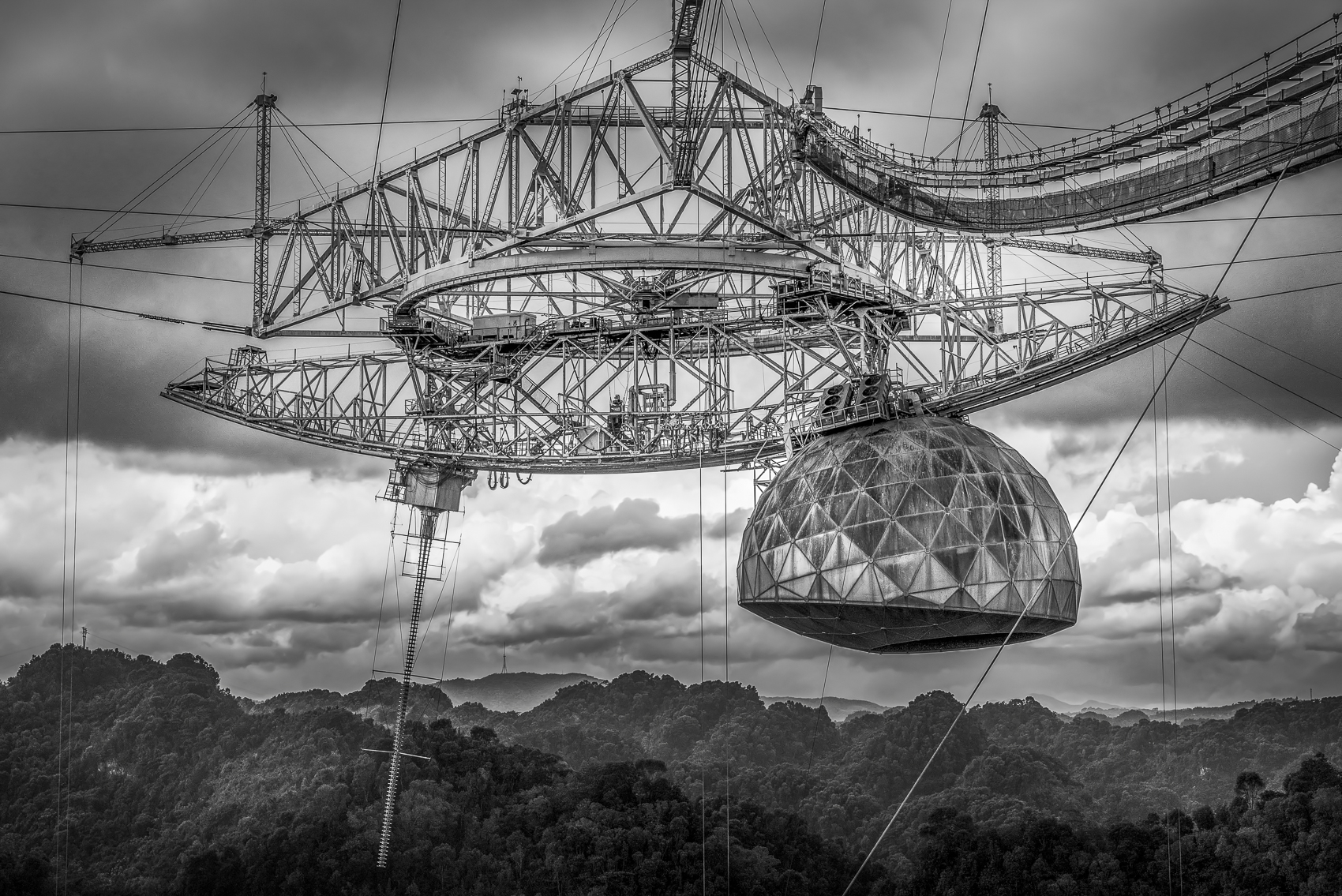On December 1, 2020, after a number of failures by cables and the sockets holding them, the massive aperture spherical radio telescope at the Arecibo Observatory in Puerto Rico suddenly collapsed. Miraculously, no one was hurt. While engineers had hoped to repair the observatory and were developing plans to do so, the unanticipated collapse was catastrophic and dashed any hopes of saving the installation.
The centerpieces of the observatory were its 1,000-foot-wide satellite dish and 900-ton platform that supported research by astronomers and scientists from around the world. If one were making a list of 20th Century Wonders of the World, the Arecibo Observatory would be in the top ten. Arecibo is a celebrity in its own right. In one of its more famous moments, Arecibo was used in the James Bond movie, Goldeneye, as the setting where the fearless secret agent 007 fights and kills Alec Trevelyan, the former Agent 006 who turned traitor. It was also a set for Jodie Foster’s iconic film, Contact.
Owned by the National Science Foundation, an independent agency of the United States, the installation supported scientific and engineering research with a clear focus on the exploration of space. Its counterpart for medical research is the National Institutes of Health. Together, the NSF and NIH are among the world’s leading research centers. But Arecibo also had a military purpose. It was used to locate and track spy satellites from the Soviet Union and China.
Why does this matter?
With the loss of Arecibo, the only one comparable observatory left in the world is a 1,640 foot radio telescope, nicknamed “Tianyan”, located in southwest China. Tianyan is more than 600 feet wider and three times more sensitive than the Arecibo. It is now the single most effective way to view space. While it is used for scientific research, it tracks spy satellites as well. With Arecibo lost, the U.S. can no longer track China’s and Russia’s satellites with anywhere near the accuracy of Tianyan.
The future Arecibo is uncertain. Congress has asked how the collapse occurred and why it wasn’t prevented, demanding a report be delivered by the end of February. It’s a critical report as its findings are tied to NSF’s federal funding. Replacing the observatory will cost billions. Whether Congress and the Administration have the appetite for such an investment remains to be seen. Meanwhile, China has another reason to claim it is leading in the space race. And this time, it is clearly a matter of national security for the United States.
